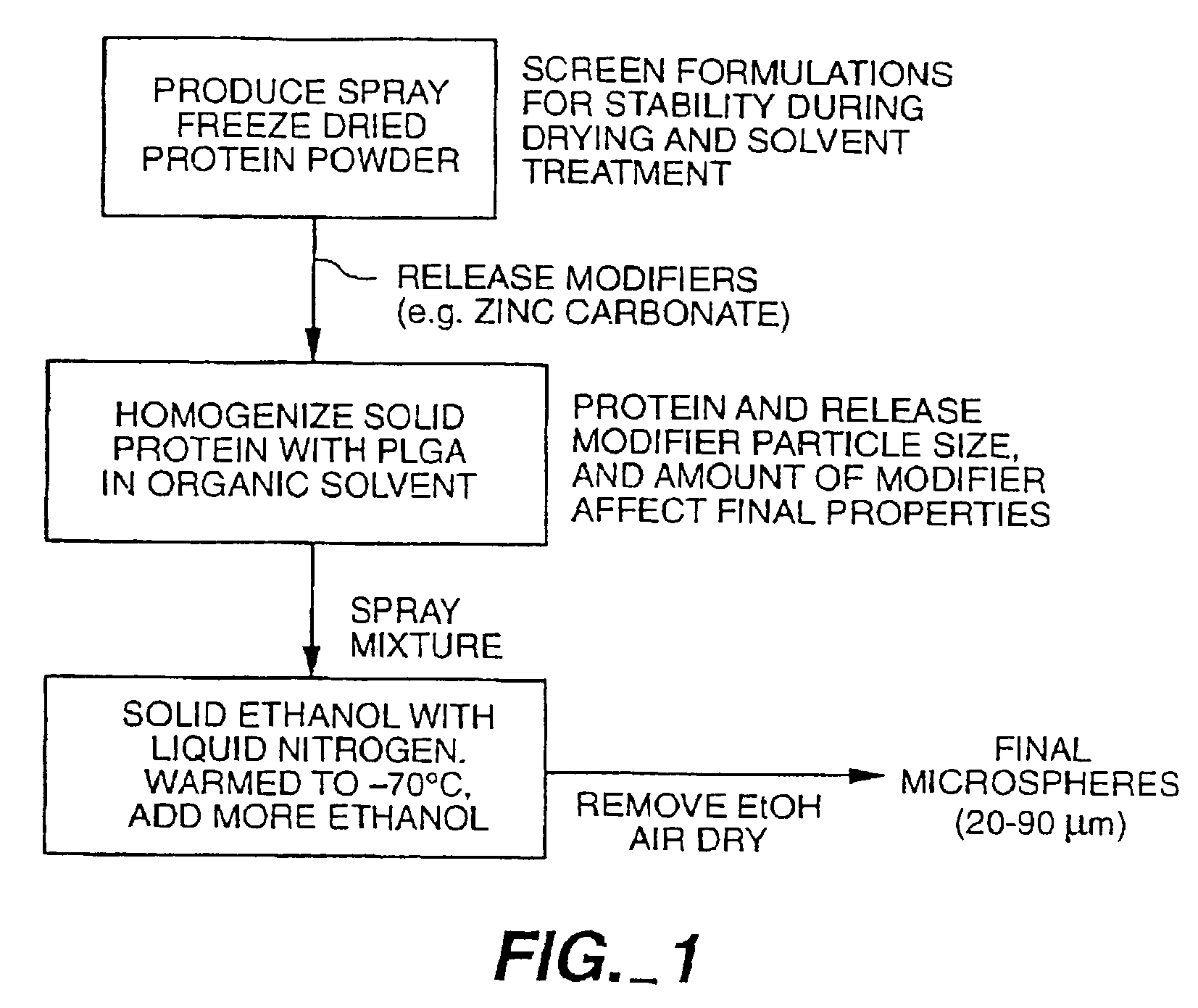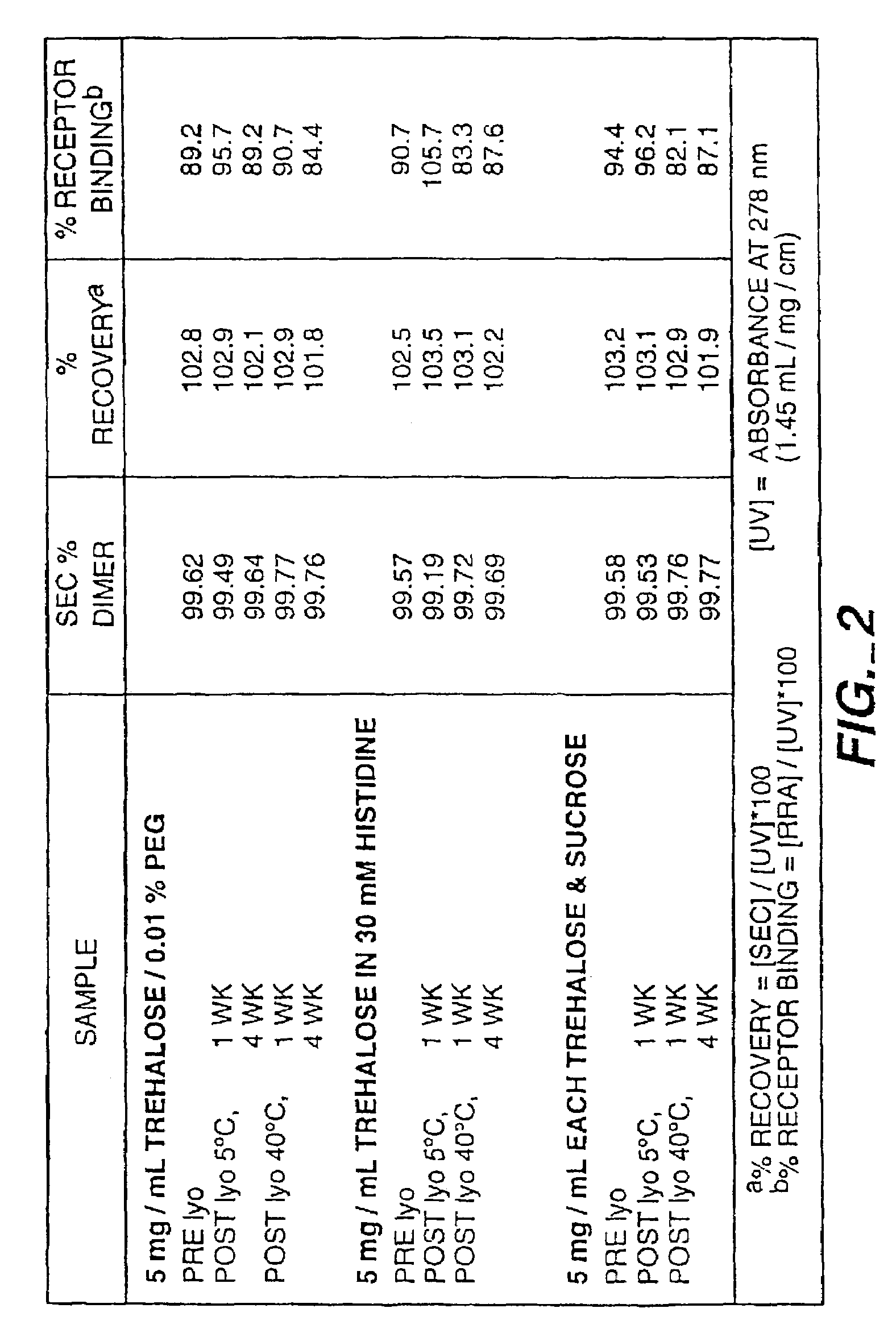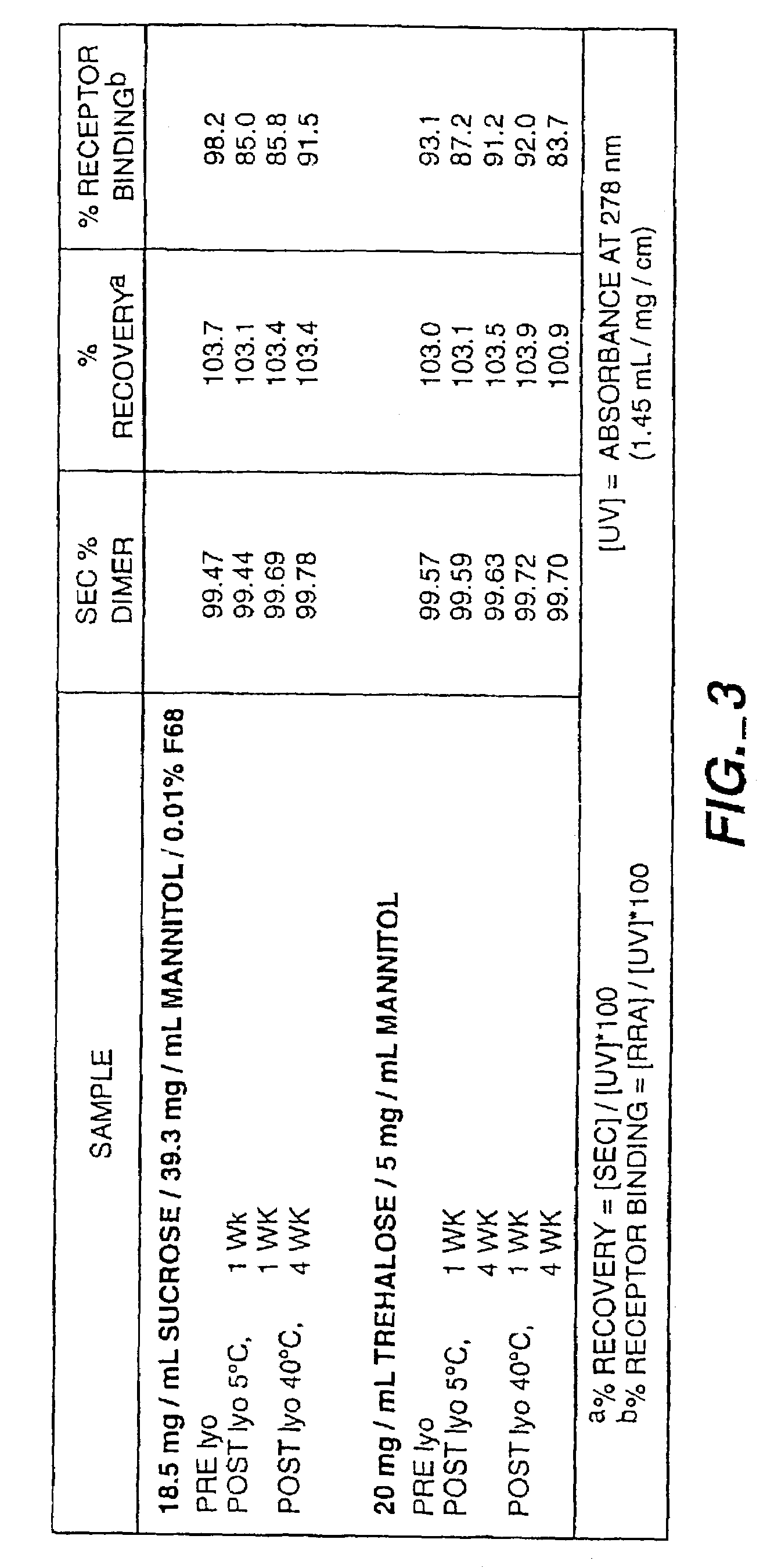Controlled release microencapsulated NGF formulation
a technology of nerve growth factor and microencapsulation, which is applied in the direction of microcapsules, peptides, drug compositions, etc., can solve the problems of complex stability of ngf, especially in liquid, and further complicated protein stability, so as to enhance the stability of ngf and reduce the initial release rate , the effect of low initial release ra
- Summary
- Abstract
- Description
- Claims
- Application Information
AI Technical Summary
Benefits of technology
Problems solved by technology
Method used
Image
Examples
example i
[0140]In the development of a long acting formulation for recombinant human NGF the use of a biodegradable polymeric matrix for sustained release of NGF was investigated. The polymer used for this application was a copolymer of lactic and glycolic acids, referred to as poly(lactic / glycolic acid) or PLGA. To incorporate NGF into this polymer, the PLGA must be dissolved in a water immiscible solvent. A commonly used solvent for dissolution of PLGA has been methylene chloride which provides both water immiscibility and PLGA solubility. However, ethyl acetate is preferred. In general, for production of NGF-PLGA microspheres, the NGF was mixed in aqueous, buffered solution, with optionally present polyol stabilizers and / or a surfactant, and freeze dried. To the freeze dried NGF powder was optionally added a release modifier, such as zinc carbonate. The NGF powder was then added to a solution of ethyl acetate containing PLGA. In initial studies, the polypeptide was added in the form of a ...
example ii
[0160]Because the in vitro release studies in Example I showed that encapsulated rhNGF degraded via aggregation (at 37° C., rhNGF released from the microspheres was aggregated—85% native dimer—after incubation for 10 days, as determined by SEC), a novel preformulation was employed. In this novel preformulation, a metal ion was complexed to the rhNGF prior to admixture with the biodegradable polymer. Surprisingly, a significant improvement in the stability (integrity) of released NGF from the microspheres was observed.
[0161]Zinc acetate was added to a solution of rhNGF formulated in 4 mM NaHCO3, at pH 7.4. Increasing the zinc acetate concentration decreased the amount of aggregate formation, as determined by SEC (FIG. 7). FIG. 7 depicts the integrity as percent monomer of the zinc-containing NGF solutions before and after freeze-drying prior to encapsulation. Zinc-containing rhNGF solutions that had been incubated as liquid at 5 and 37° C. were opalescent after 4 weeks of storage. In...
PUM
| Property | Measurement | Unit |
|---|---|---|
| diameter | aaaaa | aaaaa |
| particle size | aaaaa | aaaaa |
| particle size | aaaaa | aaaaa |
Abstract
Description
Claims
Application Information
 Login to View More
Login to View More - R&D
- Intellectual Property
- Life Sciences
- Materials
- Tech Scout
- Unparalleled Data Quality
- Higher Quality Content
- 60% Fewer Hallucinations
Browse by: Latest US Patents, China's latest patents, Technical Efficacy Thesaurus, Application Domain, Technology Topic, Popular Technical Reports.
© 2025 PatSnap. All rights reserved.Legal|Privacy policy|Modern Slavery Act Transparency Statement|Sitemap|About US| Contact US: help@patsnap.com



